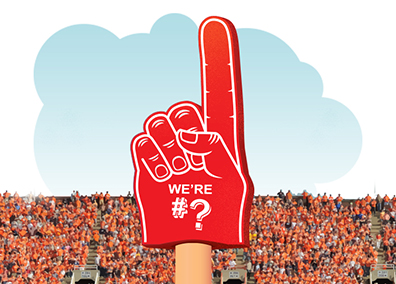by Josh Jacobson
As we outlined in our last blog introducing the first module of CULTIVATE, there is a very low barrier to entry for people who want to launch a 501c3 nonprofit. Like, really low. Fill out the paperwork and BAM! you have a nonprofit. It’s almost automated.
It is a difficult thing to ask a nonprofit founder, and we’re always nervous when we do, but sometimes it needs to be asked: why does your nonprofit exist? And should it?
The answer to that question should not be an automatic yes. If the only thing that differentiates your nonprofit’s programming is that you are leading it, that is likely insufficient justification.
In this way, nonprofits are very different than for-profit businesses. If you want to start a company that makes t-shirts, you have every right to do so. And if the t-shirts are poorly made and are drab in color, then no one will buy them and your company will go out of business. The marketplace chooses winners and losers, and that’s that.
But nonprofits are public entities that are owned by everyone, and as such are held to a different standard. They are also managed by boards of directors, and an organization with so-so or duplicative programming may be propped up by volunteers and donors who don’t know better. In the world of social good, we often can’t tell good programming from less-good; it isn’t as easy as identifying a poorly made t-shirt. And so nonprofits that have less impactful programs are allowed to continue driving resources to their causes and away from more dynamic nonprofits.
When we hear the old refrain that there are “too many nonprofits,” this is often the argument being made. And yet we know that roughly 90% of revenue to nonprofits in Charlotte go to the top 250 organizations with all the scale. These organizations are far more likely to have differentiated programming and strong, documented outcomes that can be measured.
The tough thing for the emerging organization with something special to offer? It is incredibly difficult to identify them among the ~4,000 other nonprofits fighting for the remaining 10% of revenue. And so it is even more important that dynamic leaders of emerging nonprofits lean in to efforts to build programming fidelity. It is the best way to ensure your nonprofit sticks out, gets noticed and is elevated for increased supports.
Building Program Fidelity (Module #2)
The curriculum of CULTIVATE in February aims to outline how a nonprofit’s leadership should continually be examining the world both inside and outside the organization to ensure its programming is needed, responsive and differentiated.
The curriculum focuses on three key areas:
- Needs Assessment & Competitive Screen – It is very surprising how little research many nonprofit founders do before launching their organizations. It would be like opening a restaurant with little understanding of local tastes or knowing what other restaurants are nearby. Next Stage champions ongoing research to understand the community needs a nonprofit aims to address as well as the other organizations in the space.
- Asset Inventory & Competitive Advantage – Differentiation is building block of nonprofit success, and yet is rarely surfaced in the early years of growth. Emerging nonprofit leaders are apt to find themselves in an echo chamber of positive reinforcement, with few contrarian voices actively challenging preconceived notions. With CULTIVATE, Next Stage encourages a deeper examination by emerging leaders to prepare them for the discernment that comes for all successful organizations. Participating organizations will conduct an asset inventory toward identifying competitive advantages.
- Program Design – While anecdotal evidence can be meaningful, statistical data that justifies a program’s outcomes is always more desirable. The more evidence you have about the impact of your programming, the stronger your efforts to secure resources will be. A Theory of Change and Logical Framework are two tools CULTIVATE participants will be introduced to with the goal of completing one as a component of the strategic business plan. Assessment methodologies will be reviewed and data strategies discussed.
In other news, have I mentioned recently how amazing the organizational leaders are with whom we’re working? We feel so good about our work with them and can’t wait to share more about them with you. Stay tuned!
